Volatile conditions force assemblers to brace for a rough ride.

Today’s economy is like a wild roller coaster ride. Recent events in the domestic auto industry and the housing market, not to mention skyrocketing prices for oil and raw materials, have eroded the confidence of many individuals. But, despite those challenges, most assembly professionals remain relatively upbeat.
While the U.S. economy may not officially be in a recession, many manufacturers are feeling the effects. Record oil prices have left the auto industry at its most critical juncture in 30 years. Prices at the gas pump soared 10 percent between March and April, when the 2008 ASSEMBLY State of the Profession survey was conducted.
American automakers are struggling to address a dramatic shift away from profitable sport-utility vehicles (SUVs) and pickup trucks to more fuel-efficient cars. Year-over-year sales of large SUVs were down 29 percent in April, while large pickups were down 17 percent. At the same time, sales of subcompact sedans rose 33 percent. This year, new vehicle sales are expected to reach their lowest levels since 1994.
Tightening credit markets and a slowdown in new home construction, which is expected to reach a 60-year low in 2008, has had a ripple effect in other industries as well, such as appliance manufacturing. General Electric Co. (Fairfield, CT), the largest maker of refrigerators and washers for new U.S. homes, recently announced that it will spin off its 103-year-old appliance unit because of incremental growth projections.
The Federal Reserve Bank (Washington, DC) claims that overall industrial production in the United States rose a mere 0.2 percent in March. However, the U.S. Department of Commerce (Washington, DC) reports that new orders for durable manufactured goods increased just 0.1 percent.
As a result, manufacturers in many industries are scrambling to cut costs and trim their operating budgets. Indeed, the need to implement successful cost reduction programs was cited by 46 percent of the ASSEMBLY respondents, a 4 percent increase over 2007.
While the urge to slash costs is a natural instinct for many manufacturers when faced with uncertain business conditions, it may not be the best strategy to follow. In fact, experts at Boston Consulting Group (BCG, New York) urge companies to be careful with their cost-cutting efforts.
Hal Sirkin, global leader of BCG’s operations practice, believes manufacturers should approach the economic slowdown as an opportunity to prepare for when business conditions eventually improve. “By mainly focusing on cost reduction, [companies are] not taking advantage of the opportunities a recession can provide,” he points out.
Sirkin warns that it’s easy for management to fall into the recession trap. “In a recession, everyone feels short-term pain,” he explains. “But, companies that successfully approach a recession as an opportunity have the potential to realize long-term gain. Viewed the right way, a downturn presents a strategic opportunity to leapfrog the competition, rather than simply posing a threat.”
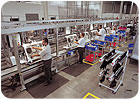
Despite recent events in the auto industry and the housing market, most assembly professionals remain relatively upbeat.
Global Growth
Some industries are contracting, but pockets of manufacturing remain robust and surprisingly upbeat. For instance, business is booming for manufacturers of farm and construction equipment.Deere & Co. (Moline, IL) recently announced record second quarter earnings due to strong global demand and favorable currency exchange rates. A worldwide boom in farm prices has boosted demand for tractors, combines and other agricultural equipment. As the dollar weakens in relation to other currencies, such as the euro, products made in the United States become cheaper to foreign buyers.
Caterpillar Inc. (Peoria, IL) is another large manufacturer that is benefiting from that economic phenomenon. The company has seen rising orders for its equipment from Brazil, China, Russia and the Middle East. Its export growth climbed 27 percent in the first quarter of 2008. In fact, approximately 70 percent of the backhoes, excavators and diesel engines that Caterpillar assembles in the United States this year will be shipped overseas.
Aerospace is another manufacturing sector that is experiencing record growth. According to the Aerospace Industries Association (AIA, Arlington, VA), aerospace employment increased in March to 651,700, a slight increase over the 2007 year-end average of 645,600.
“While overall manufacturing employment has declined, our civil, defense and space sectors are strong, with a record backlog of orders fueled by major export growth,” says Marion Blakey, AIA president and CEO. “Aerospace employment has climbed steadily since hitting a low in 2003 of 587,100.”
That increase in employment is closely tied to record industry sales, which reached $199 billion in 2007 and are expected to eclipse $210 billion in 2008. Demand for aerospace products and parts is predicted to continue its strong showing in the future, with a forecast calling for 11 percent growth in 2009. Boeing Co. (Chicago) recently reported that its first quarter revenue rose 4 percent, while its backlog hit a record $346 billion.
Caterpillar and Deere also have a large backlog of orders, but skyrocketing raw material prices are taking a toll on profit margins. According to Deere executives, prices for steel and other raw materials were up $110 million through the first six months of 2008.
Despite that expense, exports are expected to continue to bolster the U.S. economy over the next 12 months. David Huether, chief economist at the National Association of Manufacturers (NAM, Washington, DC), claims that “export growth will be a real shot in the arm for manufacturers in 2008. [That’s what has] kept the economy out of recession during the most recent two quarters.
“Companies that anticipate exports will account for at least a quarter of their sales growth this year are more optimistic and expect to invest, grow and hire more in 2008 than companies that are not globally engaged,” Huether points out. Exports of manufactured goods are up 11 percent this year vs. 2007. And, U.S. export growth in 2008 is expected to remain essentially unchanged from 2007 at 8.1 percent.
“While the manufacturing sector is currently facing severe head winds, the current situation is much milder than [economic conditions] seven years ago,” adds Huether. “[Manufacturers are] in a better position today than in 2001, when dual declines in both domestic demand and exports sent the manufacturing sector into a sharp contraction.”
The results of the 13th annual State of the Profession survey reflect some of that optimism. For instance, 35 percent of respondents have added staff to their assembly operations. And, more than half (56 percent) of assemblers claim their plants will be investing more resources in their assembly lines during the next three years.
However, assemblers are faced with growing time constraints and global competition, coupled with a skilled labor shortage. As a result, survey respondents continue to spend more time at work. For instance, almost one-third (31 percent) of assembly professionals claim that they will be spending more time roaming the plant floor or working on projects during the next 12 months. That’s a 2 percent increase over 2007.
Unfortunately, things won’t be getting any better in the near future. More than one half (56 percent) of respondents said time constraints will impact their jobs the most during the next 12 months. Those constraints will cause headaches for assemblers in both large and small companies. That’s especially true for assembly professionals in the transportation equipment manufacturing industry (59 percent), which includes automakers.
Indeed, 42 percent of those assemblers cite the skilled labor shortage as one of their biggest concerns today-a 6 percent increase over 2006. At General Motors Corp. (GM, Detroit), 25 percent of its hourly employees recently accepted retirement incentives or buyouts. Meanwhile, Ford Motor Co. (Dearborn, MI) has announced that it plans to slash its salaried workforce by up to 12 percent. That means there will be fewer people to do the same amount of work than in the past, plus a large amount of new faces moving about on the plant floor.
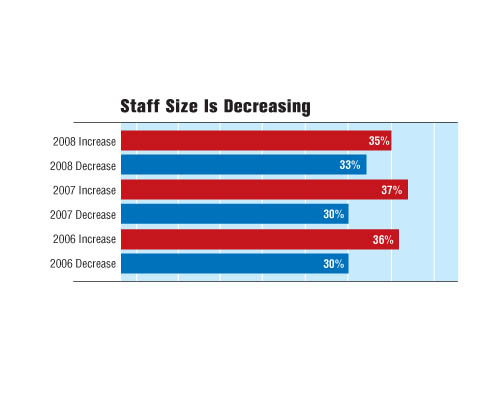
Compensation Fluctuates
The typical State of the Profession survey respondent is 46 years old, has an average of 20 years experience and earns $75,163. However, there are exceptions at both the high and low ends of the scale. For instance, 11 percent of respondents earn less than $50,000 per year, while 22 percent take home more than $90,000.More than two-thirds (67 percent) of respondents claim they received a pay increase over the last 12 months. The average salary increase was 4 percent. But, not everyone was that fortunate. Almost one-third (30 percent) of assemblers did not receive a raise.
That 4 percent salary increase matches the national average for all white-collar workers in the United States, according to Steven Gross, global leader of the broad-based rewards consulting practice at Mercer Human Resource Consulting Inc. (New York). However, Gross says “pay increases are projected to remain flat in 2008.”
Nevertheless, more than three-fourths (76 percent) of State of the Profession respondents expect to receive a salary increase at their next review, which is 2 percent less than in 2007. Assemblers in the medical device industry feel most confident about receiving an increase.
Indeed, 87 percent of those individuals say they expect a raise during the next 12 months. But, assembly professionals in the plastics and rubber products industries are less optimistic: Only 66 percent think their wallets will be getting fatter.
More than one half (51 percent) of respondents received a cash bonus during the last 12 months, a slight 1 percent increase over 2007. Most of that extra compensation is tied to overall company and plant performance, in addition to meeting deadlines for new projects and implementing successful cost reduction programs.
According to Gross, many companies are looking for “new ways to pay for performance. Segmenting their workforce helps them identify their most valuable contributors.
“Employers always strive to pay high performers better than low performers, but as pay increase budgets remain flat, organizations are widening the performance differentials by granting significantly large salary increases to high-performing employees,” explains Gross. “As companies struggle to afford and sustain compensation levels for employees, they continue to focus on variable pay. Incentives are a useful tool for supporting high levels of performance without increasing the fixed cost of base pay.”
More than one half (61 percent) of assemblers who work for companies that manufacture plastic and rubber parts claim they received a cash bonus during the past year. By comparison, only 43 percent of assemblers in the machinery manufacturing industry, which includes manufacturers of construction equipment, office machines, printing presses and power tools, received bonuses.
There is still a large gender gap in the assembly profession. The average salary of female assemblers (4 percent of respondents) is $62,244. Their compensation lags behind male assemblers by $12,283 or 16 percent.
Three-quarters (75 percent) of the women surveyed earn less than $70,000, while 57 percent of the men earn more than $70,000. One factor that accounts for some of this discrepancy is the fact that the women respondents had an average of 15 years experience in the assembly field, while men averaged 20 years of experience.
In addition to gender and experience, several other factors determine average pay rates, such as age, education, location and industry.
Industry experience is the biggest factor that determines compensation. Individuals with less than 5 years of experience in the assembly field (10 percent of respondents) earn an average salary of $61,426. On the other hand, industry veterans with more than 15 years of experience (60 percent of respondents) are rewarded with salaries that average $78,429.
Assembly professionals tend to be loyal employees who stay with the same company for long periods of time. In fact, 48 percent of respondents have worked at the same firm for more than 10 years, while 13 percent have been with their present employer for less than 2 years.
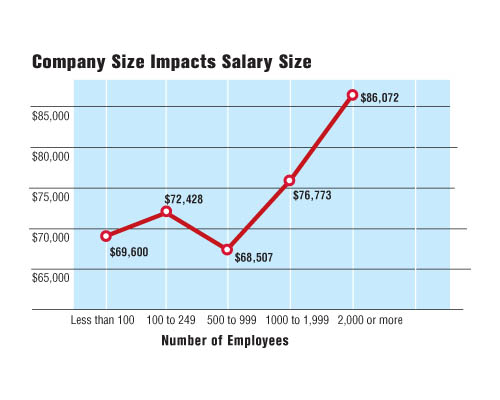
Geographic Variables
Assembly salaries vary from region to region. Often, those fluctuations are determined by the local cost of living. Traditionally, the West (Arizona, California, Colorado, Idaho, Montana, Nevada, New Mexico, Oregon, Utah, Washington and Wyoming), which is home to only 14 percent of respondents, boasts the highest salaries in the State of the Profession survey.The average salary in the West is $80,389, which is 7 percent more than the national average of $75,163.Assemblers in the Northeast (Connecticut, Maine, Massachusetts, New Hampshire, New Jersey, New York, Pennsylvania, Rhode Island and Vermont) and the Midwest (Illinois, Indiana, Iowa, Kansas, Michigan, Minnesota, Missouri, Nebraska, North Dakota, Ohio, South Dakota and Wisconsin) also earn more than the national average.
Assembly professionals in the South (Alabama, Arkansas, Delaware, Florida, Georgia, Kentucky, Louisiana, Maryland, Mississippi, North Carolina, Oklahoma, South Carolina, Tennessee, Texas, Virginia and West Virginia), which is home to 23 percent of respondents, earn 4 percent less than the national average. People in the South also work 1 hour more than the national average of 46.4 hours per week. That helps explain why so many manufacturers continue moving to the region.
For instance, several large European manufacturers have been lured to two southern states in particular. Airbus (Toulouse, France) recently announced plans to build an assembly plant in Mobile, AL, that will create up to 2,000 new jobs. ALSTOM (Paris) is building a new $200 million plant in Chattanooga, TN, that will assemble power generators and turbines. Volkswagen AG (Wolfsburg, Germany) is considering several sites in Alabama and Tennessee for a new assembly plant.
Although assemblers in the West receive higher compensation than their peers in other parts of the United States, they are the least confident about receiving a salary increase at their next review. Indeed, 76 percent of respondents say they expect a raise. However, 80 percent of assemblers in the Northeast believe they’ll receive a pay increase during the next 12 months.
Sometimes, money can’t buy happiness. For example, assemblers in the South typically receive lower salaries than many of their peers in other parts of the country, but they are more satisfied with their jobs. Only 5 percent of respondents claim to be “not satisfied” vs. 10 percent in the West and 8 percent in the Northeast.
One reason for that extra bit of happiness in the South may be due to the fact that more assemblers see their companies committing resources to assembly operations during the next 3 years. Indeed, 63 percent of respondents are optimistic vs. 56 percent in the Midwest. In addition, 40 percent of assemblers in the South claim that their company has increased staff size during the past year, compared to only 34 percent of respondents in the Midwest.
Overall, assemblers who claim to be “highly satisfied” with their jobs earn an average of $76,521, compared to $72,423 for people who claim they are “moderately satisfied.” Not surprisingly, individuals who are “not satisfied” typically do not receive cash bonuses and provide little or no input on budgeting new assembly equipment.

Sizing Up Salaries
Salary and job satisfaction levels in the assembly profession are usually influenced by the size of a manufacturer. For instance, assemblers who work in companies with more than 2,000 employees tend to earn the highest average salary: $86,072. On the other hand, small manufacturers with less than 100 employees pay an average salary of $69,638.However, bigger isn’t necessarily better, especially when it comes to compensation. Assembly professionals who work in larger companies are generally less happier than those who work for smaller firms. Indeed, 26 percent of respondents who work in companies with more than 2,000 employees claim they are “highly satisfied” with their jobs vs. 53 percent of people who work in companies with fewer than 50 employees. Assemblers who work for manufacturers with 500 to 999 employees most closely match the national “job satisfaction” average of 37 percent.
Assembly professionals in the computer and electronic products industry, which includes companies that produce antennas, audiovisual equipment, computers and peripherals, connectors, laboratory instruments, loudspeakers, navigational instruments, printed circuit boards, process control instruments, satellites, semiconductors and telephone apparatus, earn the highest salaries: $76,907. Their compensation is 2 percent above the national average of $75,163.
Other industries that boast salaries above the national average include transportation equipment (1 percent higher). The furniture and fixtures industry most closely parallels the national average, with a salary of $75,312.
Manufacturing engineers (44 percent of respondents) rank slightly ahead of design engineers (17 percent of respondents) when it comes to compensation. They earn an average of $209 more than their peers and they tend to work longer hours. However, design managers earn a little more than manufacturing process managers: an average of 5 percent more.
Age is another key factor that often affects compensation. For instance, manufacturing engineers who are under 50 years old earn less than design engineers of the same age. However, manufacturing engineers over 60 earn more than design engineers.
Assembly professionals who are more than 60 years old typically earn the highest salaries. For example, individuals who are 60 or older earn 19 percent more than their peers who are in their 30s and 72 percent more than 20-year-olds. The average salary for assemblers in their 60s is $83,041, compared to an average of $69,866 for respondents in their 30s.
Salaries also fluctuate dramatically based on type and level of education. For instance, assembly professionals with just a bachelor’s degree (58 percent of respondents) earn an average of $73,855. However, assemblers with master’s degrees (17 percent of respondents) earn an average of $14,444 more than individuals who only have 4-year college degrees (a 16 percent difference).
One way to earn a higher salary is by obtaining a master’s in business administration (MBA). The ASSEMBLY survey discovered that MBAs (8 percent of respondents) make an average of 17 percent more than non-MBAs. In fact, 68 percent of MBA respondents earn more than $80,000. However, MBAs typically work longer hours than other individuals.
Another way to guarantee a higher-than-average salary is to become certified. Assemblers who hold a certified manufacturing engineer (CMfgE) or professional engineer (P.E.) designation earn an average salary 6 percent higher than noncertified engineers. Individuals with P.E.s (8 percent of respondents) earn an average of $77,223, while CMfgEs (4 percent of respondents) make $76,318.
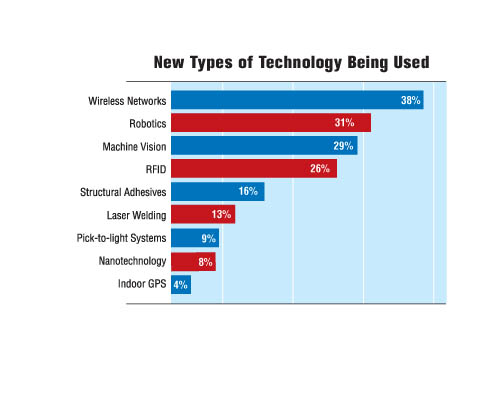
Measuring Happiness
Most respondents claim to be satisfied with their jobs, but a closer look at the data reveals some differences. For example, manufacturing engineers tend to be a little happier than design engineers. Indeed, 33 percent of manufacturing engineers claim to be “highly satisfied” vs. 31 percent of design engineers.Some of the happiest assemblers work in the plastics and rubber products industry, where 45 percent of respondents claim to be “highly satisfied” with their jobs. In contrast, only 35 percent of assemblers in the transportation equipment industry are “highly satisfied.”
Job satisfaction can be defined many different ways. But, here’s what a few respondents had to say:
“I have a wide range of roles and responsibilities that allow me to get involved in all areas of development and production,” says a manufacturing engineer at a transportation equipment manufacturer who is satisfied with his job.
“I have the authority to make effective change within my organization,” adds a plant manager in the electrical equipment and appliances industry. “My input is valued in many areas, from process change to lean training.”
“I work for a company that is experiencing tremendous growth potential,” notes a design engineer at a medical device company. “I have been given the opportunity to lay out and implement strategic plans to aid us in gaining market share.”
“The work related to the technology in the devices we produce is not that rewarding, but developing the process, documentation and controls to manufacture the device is an immense challenge and very satisfying to accomplish,” explains a manufacturing engineer in the computer and electronics industry.
However, some respondents are less satisfied with their jobs. “Budget restraints keep us from achieving the innovation levels we are capable of,” laments a design engineer in the plastics and rubber products industry.
“I cannot get total buy-in from top management to support lean manufacturing concepts,” adds a manufacturing engineer in the furniture and fixtures industry.
“Engineers are seen as being negative, necessary overhead,” says a manufacturing engineer in the transportation equipment industry. “We are misunderstood by management and our opinions are not sought.”
“I do too much paperwork,” adds a design engineering manager at a medical device manufacturer.
“My company is too quick to respond to fixing problems, but not very good at being proactive in preventing problems,” gripes a manufacturing engineer in the fabricated metal products industry.
Budget cutbacks have a big impact on job satisfaction these days. Unfortunately, it’s a problem that affects assemblers who work for both large and small manufacturers. For instance, 31 percent of respondents at small manufacturers (companies with 100 or less employees) claim that budget cutbacks are affecting their job vs. 62 percent of respondents at large manufacturers (companies with 2,000 or more employees).
Assemblers in the transportation equipment industry (62 percent), which includes automakers and auto part suppliers, are the most concerned about budget cutbacks. That’s not surprising, since many companies have been cutting back on production. For instance, Ford recently announced that it’s scaling back North American production by 40 percent through the end of this year, while GM plans to close four plants that cranked out pickups and SUVs in the past.
However, respondents in the machinery manufacturing industry (34 percent) and the medical device industry (40 percent) are less concerned about budget cutbacks. Assemblers in those two industries are much more concerned about time constraints.
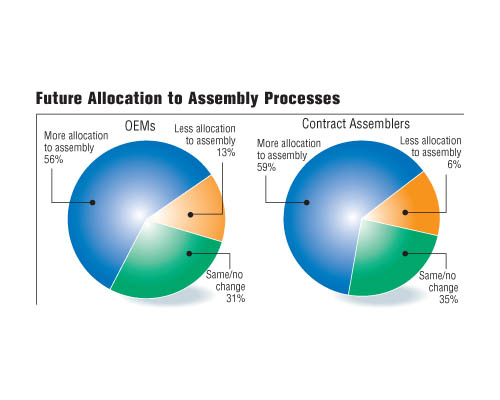
No Time to Worry
Assembly professionals continue to spend a large amount of time on the plant floor. In fact, 88 percent of respondents currently work more than 40 hours a week. The national average is 46 hours.Assemblers in the transportation equipment industry work the longest days, with a weekly average of 47.3 hours. At the other end of the spectrum, respondents who work in the furniture and fixtures industry put in an average of 44.6 hours per week.
However, assembly professionals who work longer hours tend to earn higher salaries. For instance, individuals who work an average of 51 to 60 hours a week earn an average of $77,346. Individuals who typically work 41 to 45 hours a week earn $72,350.
Corporate managers claim to have the longest work weeks: an average of 48.3 hours. By comparison, manufacturing process managers and design managers average 47.1 hours, followed by manufacturing engineers (46.1 hours) and design engineers (44.8 hours).
More than one-third (35 percent) of respondents who work in the transportation equipment sector expect to put in more hours in the months ahead, compared to only 10 percent of assemblers in the plastics and rubber products industry.
Assemblers in the Midwest plan to work more than their peers in other parts of the country. For instance, 32 percent of respondents in that part of the United States believe the hours they spend at work each week will increase during the year ahead. On the other hand, only 24 percent of assemblers in the West expect to work longer hours.
Assembly professionals who work for large manufacturers plan to spend more time at work than their counterparts in smaller companies. One-third (34 percent) of respondents who work for manufacturers with more than 1,000 employees expect to work more hours per week in the next 12 months. However, only 29 percent of assemblers who work for companies with fewer than 100 employees foresee longer work weeks ahead.
More than half (56 percent) of respondents said mounting time constraints will affect their ability to do their jobs during the next 12 months. Time constraints will also have a bigger impact on assemblers who work in large companies. For instance, 64 percent of assembly professionals who work for companies with 2,000 or more employees will be affected by time constraints vs. only 55 percent of respondents in companies with less than 100 employees.
Time constraints will cause the most stress on assemblers who work in plastics and rubber products manufacturing (61 percent), who are under intense pressure to launch new products and meet deadlines for projects.
“Heavy workloads and time constraints tend to increase job stress,” says one respondent who currently claims to be doing the work of three people. “I am so busy keeping the status quo that I do not have time to implement needed change,” notes a different individual. “I enjoy what I do, but there’s not enough time to accomplish all that is required,” laments another overloaded respondent.
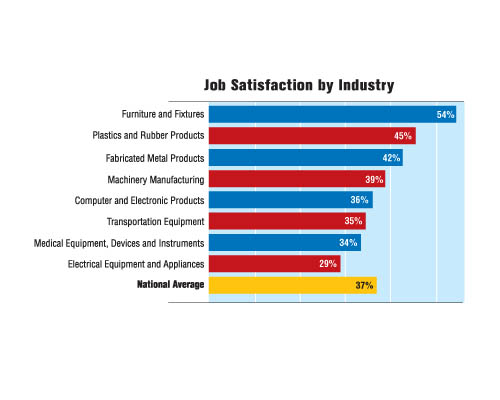
New Technology Drives Growth
Manufacturers need to leverage new technology to stay competitive in today’s global landscape. Fortunately, most assemblers are optimistic about future investments in capital equipment.When asked, “How do you see your company committing resources toward improving assembly operations during the next 3 years?” more than half (56 percent) of the State of the Profession respondents said “more resources.” Only 13 percent said “less resources,” while the remainder (31 percent) said resources will remain the same.
Assembly professionals plan to implement a wide variety of new technologies, such as robotics (31 percent of respondents), machine vision (29 percent) and radio-frequency identification (26 percent), to boost productivity.
Robotics is most popular in the plastics and rubber products industry, which includes manufacturers of belts, bottles, pipes and fittings, and plumbing fixtures, where 49 percent of respondents claim they will use the technology in their plants during the next 12 months. Fabricated metal product manufacturers (39 percent) also expect to invest heavily in robotics technology.
Machine vision technology is most popular in the computer and electronics product manufacturing industry, where one-third (34 percent) of respondents will be implementing new devices in the coming months. Manufacturers of medical equipment, devices and instruments (19 percent) will be the heaviest users of RFID technology.
Many manufacturers are also turning to evolving technologies, such as nanotechnology, to gain a competitive edge in today’s competitive marketplace. After years of development, nanotechnology is finally beginning to go mainstream. In fact, Lux Research Inc. (New York) claims that more than $50 billion in nano-enabled products were sold worldwide last year. The transition from lab to marketplace matches a historical pattern previously seen in fields such as plastics and biotech.
According to the State of the Profession survey, use of nanotechnology continues to increase in various manufacturing sectors. In this year’s study, 8 percent of respondents claim they are using nanotechnology vs. 5 percent in 2007 and 3 percent in 2006. Eleven percent of respondents at large manufacturers claim they will implement the technology in their plants or products during the next 12 months vs. 6 percent of respondents at small manufacturers.
Manufacturers in the electrical equipment and appliance industry (11 percent) expressed the most interest in nanotechnology. According to the Project on Emerging Nanotechnologies (Washington, DC), the technology is used in products such as refrigerators, humidifiers, air conditioners, air purifiers and washing machines.
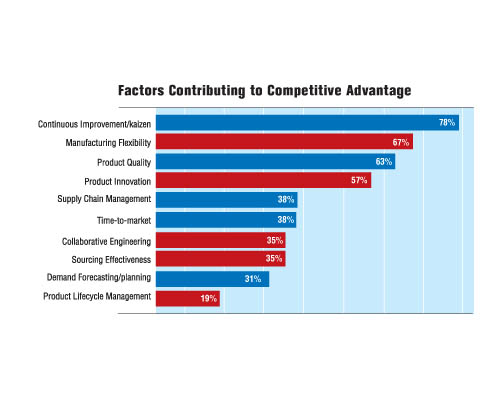
Survey Methodology
ASSEMBLY magazine would like to thank all the respondents who participated in its 13th annual State of the Profession survey. The survey was conducted online in March 2008 by Clear Seas Research (Troy, MI). All readers with e-mail addresses were contacted electronically and encouraged to click a special hot link to the online questionnaire.The charts and tables in this report highlight the major data gleaned from the survey responses. On some of the questions, the response rate does not equal 100 percent due to rounding or surveys that contained one or more unanswered questions. In cases where multiple responses were allowed, the total may exceed 100 percent.
Special thanks to Katie Bennett and Vince Schneider for their assistance with online survey design, distribution and tabulation. For more information on this study, please John Thomas at 248-786-1659 or thomasj@clearseasresearch.com.
Green Initiatives Catch On
Manufacturers are more environmentally aware than ever. They’re ramping up efforts to save energy and reduce waste on the plant floor. That involves everything from recycling initiatives to installing new lighting systems.According to the 2008 ASSEMBLY State of the Profession survey, almost one half (46 percent) of respondents claim that their plant has initiated some type of green or sustainability initiative within the last 12 months. Green activity is most common in the transportation equipment industry, where 61 percent of assemblers work in plants that have implemented environmental programs.
Ford Motor Co. (Dearborn, MI) and Toyota Motor Engineering and Manufacturing North America Inc. (Erlanger, KY) are two good examples of automakers that have green assembly plants. Earlier this year, both companies received Energy Star awards from the U.S. Environmental Protection Agency (EPA, Washington, DC).
Ford earned the award for superior energy efficiency at several of its assembly plants in the United States. Since 2000, the company has reduced total energy use by 30 percent. Renewable power currently supplies 5 percent of Ford’s energy needs.
Toyota was lauded by the EPA for replacing lights in its plants with more energy-efficient technology that saves $500,000 annually and reduces CO2 emissions by more than 10,000 metric tons. Toyota recently set a goal of reducing energy consumption by 2.7 percent per unit annually between 2007 and 2011.
Assembly professionals in the computer and electronic products (53 percent) and electric equipment and appliances (49 percent) industries are also actively engaged in green programs. For instance, Schneider Electric/Square D Lexington, the recipient of ASSEMBLY’s 2007 Assembly Plant of the Year award, is a good example of a manufacturer that is committed to protecting the environment.
The 480,000 square foot plant has made numerous changes in the way that it consumes electricity and natural gas. It has installed variable-frequency drives on boiler feed pumps; replaced the roof of the plant to minimize heat loss and leakage; and installed motion-sensing lights in key areas.
Large manufacturers (companies with 2,000 or more employees) are more likely to implement green initiatives. For example, 59 percent of assemblers in that category claim they have implemented sustainability programs at their plant during the last 12 months, compared to only 27 percent of small manufacturers (companies with fewer than 50 employees).
Cutting the Wire
Manufacturers continue to install wireless systems on their assembly lines. More than one-third (38 percent) of the 13th annual State of the Profession survey respondents said they will be implementing the technology in their plants during the next 12 months to control conveyors, fastening tools, parts feeders, robots and other production equipment that has traditionally been tethered to miles of wire and cable.
Wireless systems offer numerous benefits for assembly applications, including cost, flexibility and mobility. The biggest advantage is the ability to dramatically reduce cabling, and the numerous headaches associated with it. As cable management costs continue to escalate, the cost of wireless technology keeps dropping.
The biggest demand for wireless is in the machinery manufacturing industry, where 42 percent of respondents claim they will use the technology in their plants during the next 12 months. Medical device manufacturers (41 percent) and plastics and rubber products manufacturers (40 percent) are also eager to harness wireless technology on the plant floor.
Larger companies appear to be more willing to go wireless. For example, 49 percent of plants with 2,000 or more employees plan to invest in wireless systems during the next 12 months. In contrast, only 39 percent of manufacturers with less than 100 employees expect to commit resources to the technology.
Wireless systems offer numerous benefits for assembly applications, including cost, flexibility and mobility. The biggest advantage is the ability to dramatically reduce cabling, and the numerous headaches associated with it. As cable management costs continue to escalate, the cost of wireless technology keeps dropping.
The biggest demand for wireless is in the machinery manufacturing industry, where 42 percent of respondents claim they will use the technology in their plants during the next 12 months. Medical device manufacturers (41 percent) and plastics and rubber products manufacturers (40 percent) are also eager to harness wireless technology on the plant floor.
Larger companies appear to be more willing to go wireless. For example, 49 percent of plants with 2,000 or more employees plan to invest in wireless systems during the next 12 months. In contrast, only 39 percent of manufacturers with less than 100 employees expect to commit resources to the technology.
See more 2008 State of the Profession statistics at "Salary Snapshot: Design Engineers" and "Salary Snapshot: Manufacturing Engineers."
